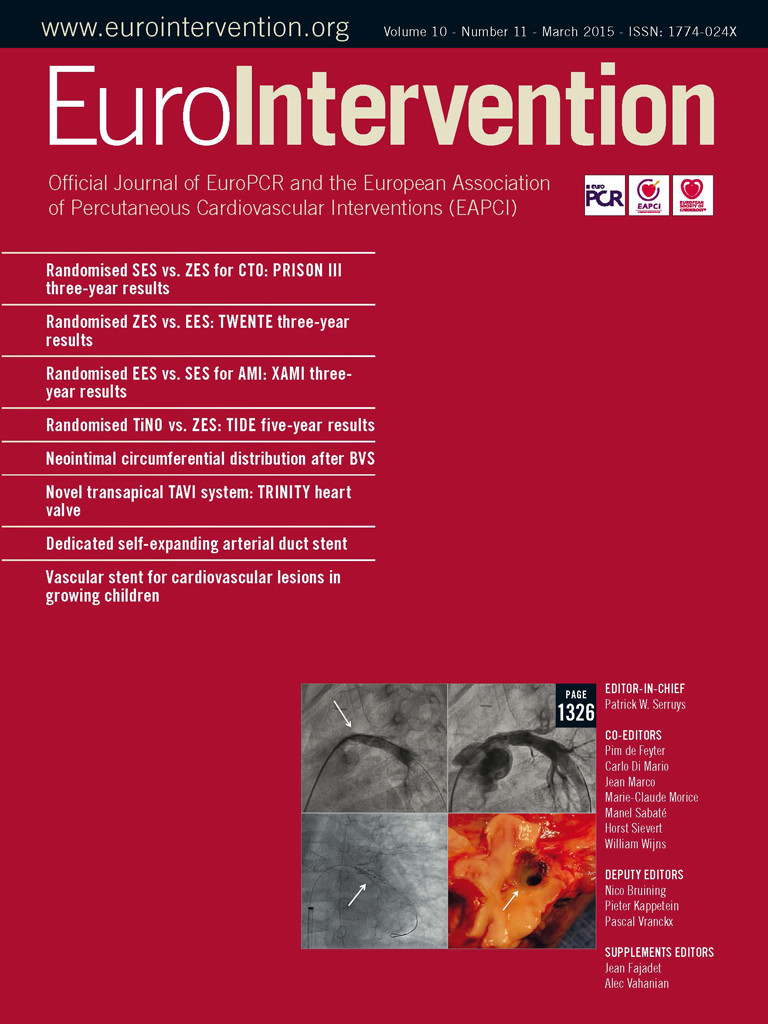Interventional cardiology can start very early in life and is clearly not exclusively related to acquired coronary or structural heart disease. Over the years, technical developments have greatly facilitated treatment of both children and adults. The Rashkind balloon atrial septostomy in transposition of the great arteries was followed by Gruentzig’s coronary balloon dilation ten years later. When low-profile balloons for peripheral vascular interventions entered the market, balloon dilation for congenital valvular pulmonary and aortic stenosis at a young age became routine. The exchange of experience and tools among the various interventional disciplines has proven very fruitful, especially where small patient numbers limit the innovative contribution of companies. Adults with congenital heart disease can be stratified into two types, namely patients who have been treated during the paediatric years with follow-up through adulthood, and the patients whose symptoms manifest for the first time in adult life. Bearing this in mind, it is commendable that this “adult interventional journal” is also a platform for reports from the field of congenital interventional cardiology1.
The arterial duct between the main pulmonary artery and the descending aorta is an essential vessel in foetal circulation, but normally closes within a few days after birth. However, in certain types of complex congenital heart disease, keeping the duct open is life-saving. In neonates who are born with either a duct-dependent pulmonary or systemic circulation, intravenous prostaglandin is the preferred drug for prevention of spontaneous duct closure. Once the patient is stable, a more durable solution should be created. Depending on the type of lesion, various palliative therapeutic approaches are possible, both surgical and interventional.
In a duct-dependent pulmonary circulation such as pulmonary atresia, the surgeon may create a systemic-pulmonary shunt as an alternative duct. Also, the duct may be stented to maintain pulmonary perfusion. In these cases, the anatomy of the duct is highly variable regarding its origin from the aortic arch, its length and tortuosity. In two recent studies, the experience with ductal stenting in pulmonary atresia was described, and the authors found that in tortuous duct morphology and univentricular physiology the results were less optimal. Ductal stenting is most successful in the subgroup of pulmonary atresia with an intact ventricular septum in which the ductal anatomy is less variable than in the other subgroups2,3. In clinical practice, the variable results of ductal stenting have hampered a wide acceptation of ductal stenting for duct-dependent pulmonary circulation, despite good published results from dedicated teams3-5.
In lesions with a duct-dependent systemic circulation, ductal stenting has gained wider acceptance in recent years. A typical example is the hybrid treatment of hypoplastic left heart syndrome. The Giessen group has already pioneered this technique over many years6,7. In this approach, stenting of the duct is combined with surgically performed banding of both pulmonary artery branches. In this way, systemic circulation is maintained and pulmonary overperfusion is prevented. This hybrid approach is now well accepted by many units, as an alternative to the Norwood operation as first step.
The first reports of ductal stenting date from over twenty years ago8,9. Stents which have been used are those that were on the shelf for other indications such as coronary artery, peripheral vascular or biliary use. By definition, the use of such products for this indication is off-label. Regarding the low volume and variable duct anatomy, it is not surprising that specific products for arterial duct stenting have not been developed. The only exception is a dedicated self-expanding ductal stent developed by the Giessen group. In this issue of EuroIntervention, Goreczny et al from London describe their midterm experience with this specially designed stent in hybrid palliation of hypoplastic left heart syndrome1. The authors should be complimented on their results. Their findings are important for improving clinical management of these seriously ill neonates, as well as for the further development of dedicated products for small patient groups.
Conflict of interest statement
The author has no conflicts of interest to declare.

